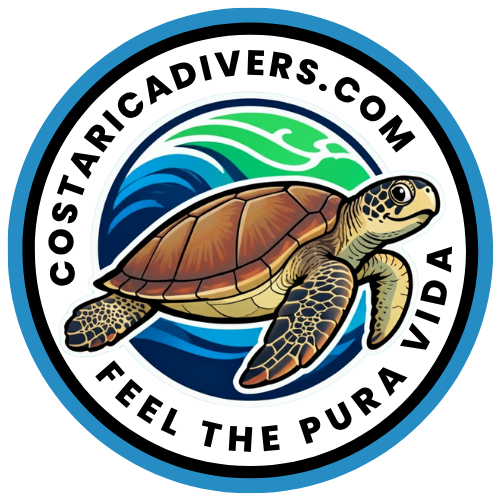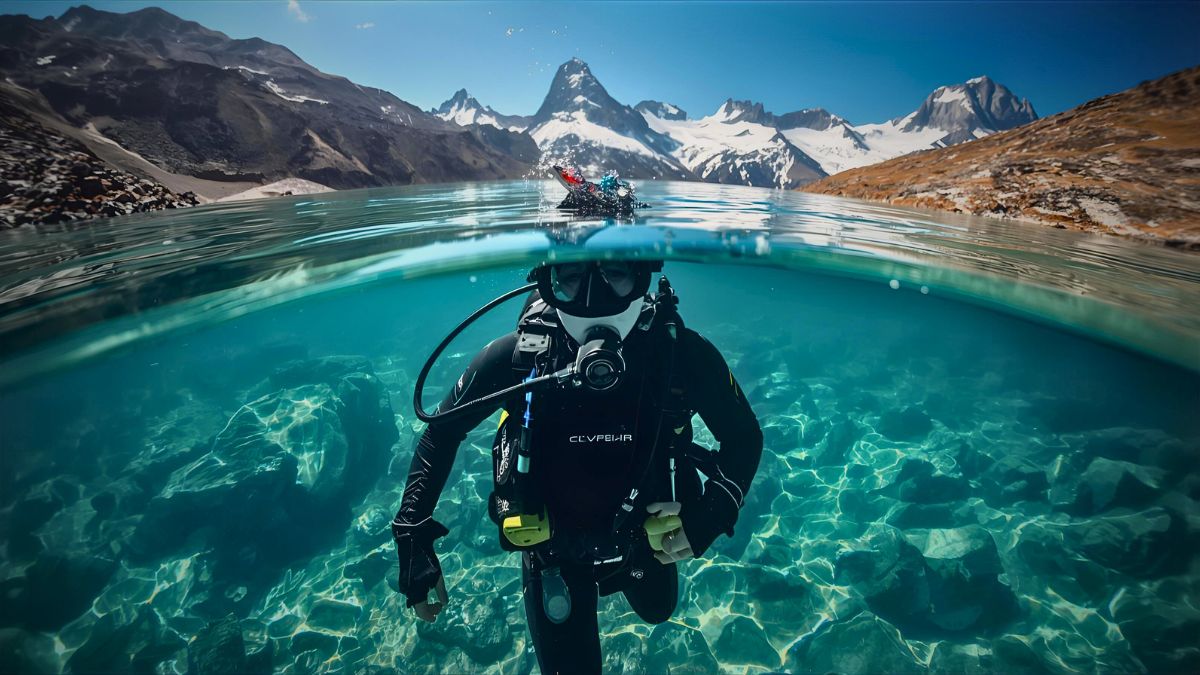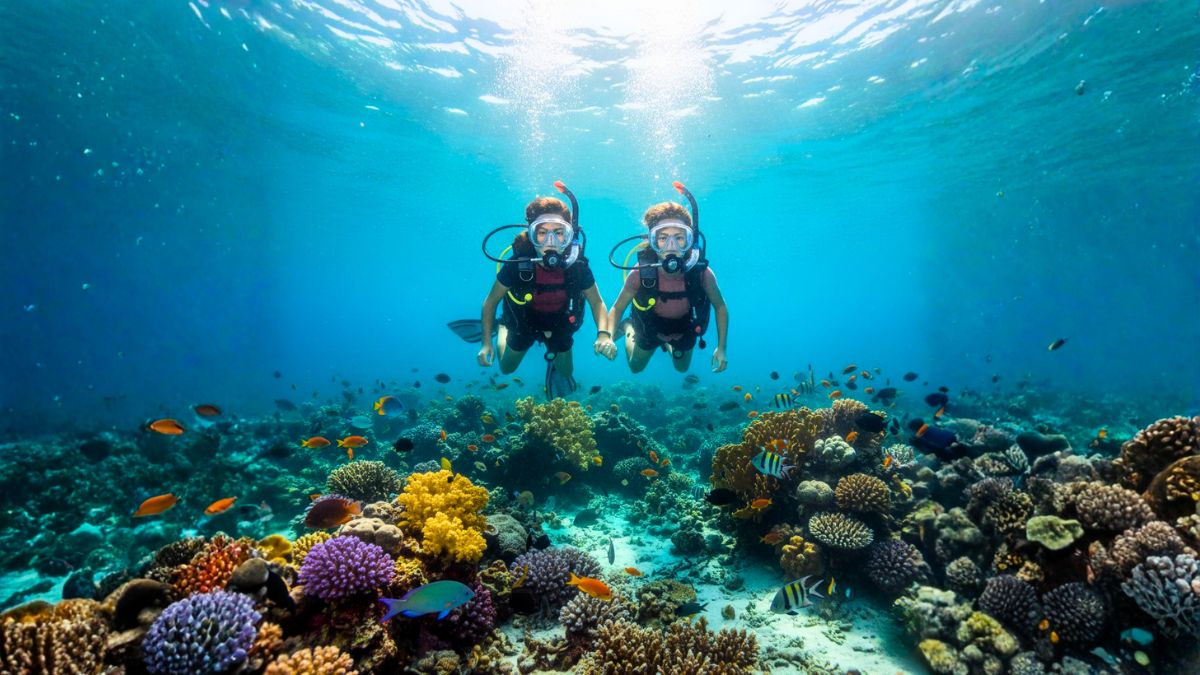In Costa Rica, I’ve seen dolphins more times than I can count, and it never gets old. Every encounter is electric – the clicks, the speed, the sudden curiosity. No matter how often it happens, it always feels incredible.
Costa Rica sits perfectly between the Pacific Ocean and Caribbean Sea, creating a unique meeting point for multiple dolphin species. With nearly 30% of our ocean territory protected by law and over 34 species of whales and dolphins recorded in our waters, this little country punches way above its weight for marine life encounters.
In this guide, I’ll share everything I’ve learned from years of diving, snorkeling, and leading dolphin watching tours along both coasts. You’ll discover which species live here, where to find them, the best times to visit, and how to watch these incredible animals responsibly. Whether you’re a diver, snorkeler, or prefer staying dry on a boat, I’ve got you covered.
What Types of Dolphins Live in Costa Rica?
Costa Rica’s waters host an impressive variety of dolphin species. Some are year-round residents, while others migrate through during specific seasons. Let me introduce you to the dolphins you’re most likely to encounter.
Bottlenose Dolphins (Tursiops truncatus)
The bottlenose is the dolphin most people recognize from movies and aquariums. These charismatic animals can grow up to 12 feet long and weigh over 1,000 pounds. Their distinctive curved dorsal fin and perpetual “smile” make them easy to identify.
Bottlenose dolphins are the most commonly sighted species along both Pacific and Caribbean coasts. They’re incredibly social, traveling in pods of 10-30 individuals, though I’ve seen super-pods of over 100 near the Osa Peninsula during peak season.
What I love about bottlenose dolphins is their curiosity. They frequently approach boats and seem genuinely interested in human activities. During our diving tours, they sometimes follow us to the dive site and wait at the surface while we explore below. Their intelligence is remarkable. I’ve watched them use sophisticated hunting techniques, working together to herd fish into tight balls before taking turns feeding.
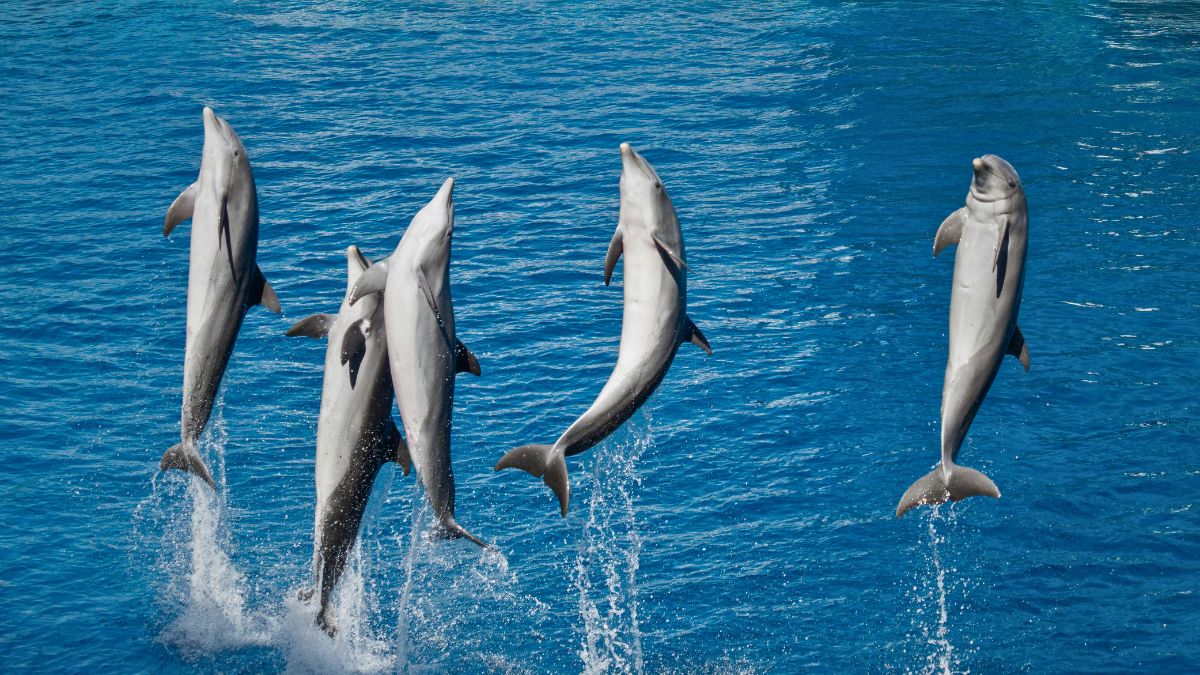
Spotted Dolphins (Stenella attenuata)
Pacific spotted dolphins are slightly smaller than bottlenose, reaching about 8 feet in length. Young spotted dolphins are born without spots, which gradually appear as they mature. By adulthood, they’re covered in a beautiful speckled pattern that makes them unmistakable.
These dolphins are incredibly acrobatic. I’ve seen them leap 10 feet out of the water, spinning and twisting before splashing back down. They seem to do this purely for fun, especially when boats are nearby. Spotted dolphins travel in larger groups than bottlenose, sometimes forming pods of 50-100 individuals.
In Costa Rican waters, spotted dolphins are most abundant on the Pacific side, particularly around Marino Ballena National Park and near Caño Island. They’re often spotted during our snorkeling tours, bow-riding in front of boats and performing aerial displays.

Spinner Dolphins (Stenella longirostris)
Spinner dolphins earned their name honestly. These dolphins can rotate up to seven times in a single leap, spinning like corkscrews through the air. The first time I witnessed this behavior, I thought I was seeing things. But no, they really do spin that much.
Scientists believe spinning serves multiple purposes. It might help remove parasites, communicate with other pod members, or simply be playful behavior. Whatever the reason, it’s absolutely spectacular to watch.
Spinner dolphins are smaller and more slender than bottlenose or spotted dolphins, typically reaching 6-7 feet in length. They have a distinctive three-tone color pattern with a dark gray back, lighter gray sides, and white belly. In Costa Rica, you’ll find them most commonly in Golfo Dulce and around the Papagayo Peninsula, usually in very large pods that can number in the hundreds.

Other Dolphin Species You Might Encounter
While bottlenose, spotted, and spinner dolphins are the stars of the show, Costa Rica’s waters host several other species worth mentioning.
Common dolphins (Delphinus delphis) occasionally appear in offshore Pacific waters. They’re fast swimmers with distinctive hourglass patterns on their sides. I’ve only encountered them a handful of times, usually several miles offshore during trips to Caño Island.
Pacific white-sided dolphins migrate seasonally to Costa Rica’s northern Pacific waters. These stocky dolphins have beautiful markings and are known for their energetic behavior around boats.
Did you know? Spinner dolphins rest during the day in shallow, protected bays, then move to deeper offshore waters at night to feed. This daily pattern makes morning the best time to observe them near the coast.
On the Caribbean side near Manzanillo Beach, you might spot Guiana dolphins (Sotalia guianensis). This small, isolated population is the only place in Costa Rica where this species lives. They’re smaller than bottlenose dolphins and have a pinkish belly.
And here’s something most people don’t know: false killer whales are actually members of the dolphin family, despite their name. These large dolphins occasionally appear in Costa Rican waters, particularly between November and April.
Where Are the Best Places to See Dolphins in Costa Rica?
After leading hundreds of marine tours, I can confidently say that location matters enormously for dolphin encounters. Some spots offer year-round sightings, while others are seasonal. Let me walk you through the absolute best locations.
Why Is Marino Ballena National Park the Top Dolphin Destination?
I might be biased since I’m based in Uvita, but Marino Ballena National Park genuinely deserves its reputation as Costa Rica’s premier dolphin watching destination. The park protects 13,000 acres of ocean along the South Pacific coast, creating a marine sanctuary where dolphins thrive year-round.
The park’s famous whale tail sandbar isn’t just a pretty photo opportunity. This natural formation, visible during low tide, sits at the convergence of several ocean currents. These currents bring nutrient-rich water that supports massive schools of fish, which in turn attract dolphins feeding on them.
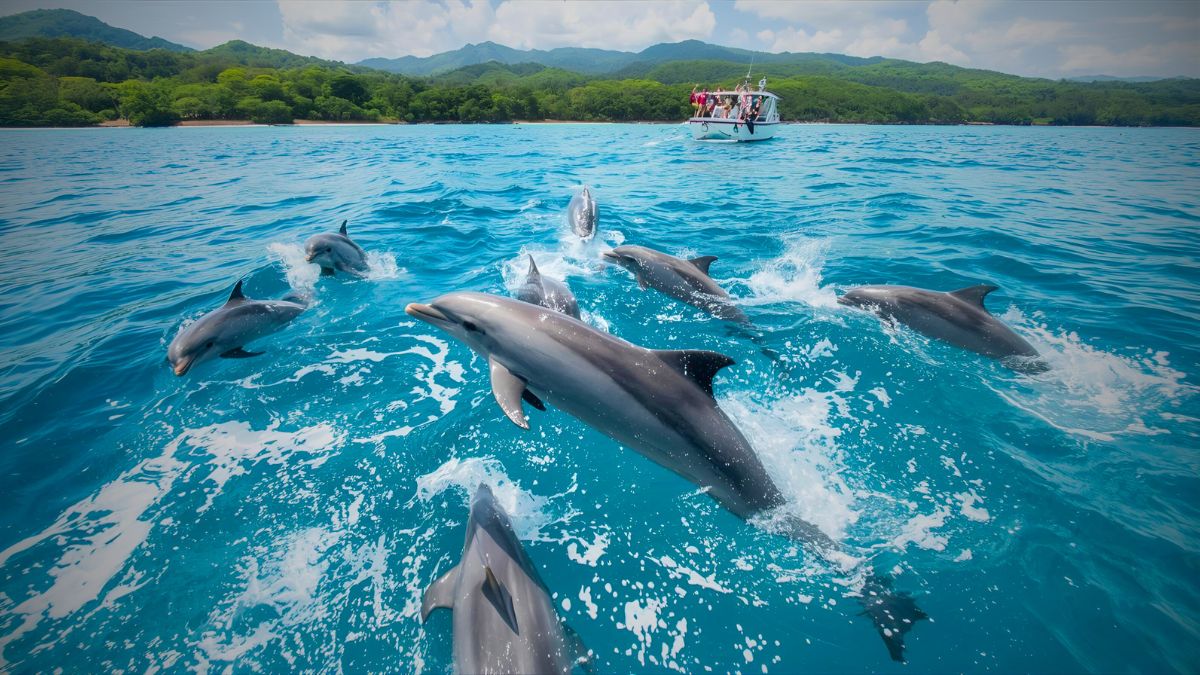
The park also offers something special: protected waters that remain relatively calm even when offshore conditions are rough. This makes it perfect for first-time snorkelers and families with children who want to experience dolphin watching without dealing with seasickness.
What Makes Uvita Perfect for Dolphin Watching?
Let me tell you why Uvita is my favorite base for dolphin tours, and it’s not just because I live here. Uvita offers unique advantages that other coastal towns simply can’t match.
First, boat access. We can launch directly from Uvita Beach during high tide or from nearby Ballena, putting us in prime dolphin territory within 10-15 minutes. Compare that to other regions where you might spend 45 minutes just reaching the viewing area. Less travel time means more time with dolphins.
Second, proximity to multiple hotspots. From Uvita, we’re 20 minutes from the protected waters of Marino Ballena, 60 minutes from Caño Island Biological Reserve, and 45 minutes from the southern edge of Golfo Dulce. This gives us options. If dolphins aren’t showing in one area, we can quickly move to another.
Can You See Dolphins in Golfo Dulce?
Golfo Dulce is one of only four tropical fjords in the world, and it’s absolutely magical for marine life. This deep gulf between the Osa Peninsula and mainland Costa Rica offers calm, protected waters that dolphins love.
The gulf hosts all three common species: bottlenose, spotted, and spinner dolphins. Spinner dolphins are particularly abundant here, often gathering in large pods near the shoreline during morning hours. The calm water makes Golfo Dulce ideal for kayak or paddleboard dolphin watching, something that’s difficult or impossible in rougher Pacific waters.
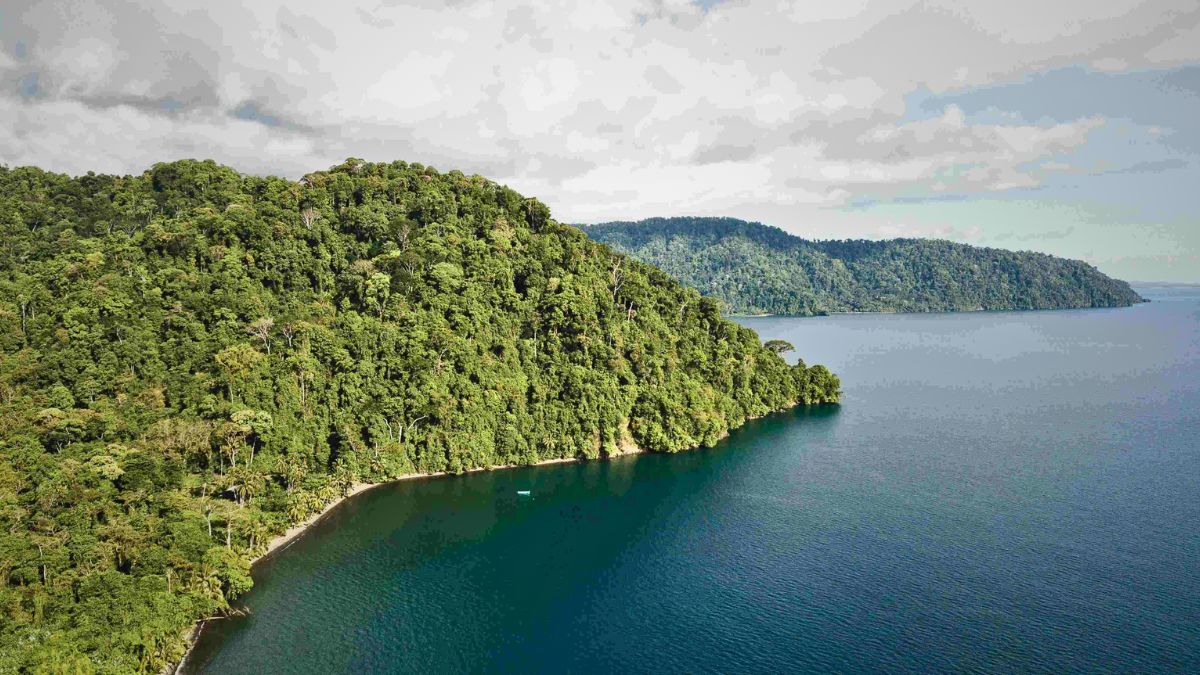
Most dolphin tours in Golfo Dulce launch from Puerto Jiménez or Golfito. The advantage here is flat water even during windy season, making this an excellent choice if you’re prone to seasickness. The disadvantage is that tours from this area tend to be pricier and you’ll see fewer humpback whales compared to Marino Ballena.
What About Dolphin Watching on the Osa Peninsula?
The Osa Peninsula, particularly around Drake Bay, is legendary among marine wildlife enthusiasts. National Geographic called the Osa “the most biologically intense place on Earth,” and the waters surrounding it live up to that reputation.
Drake Bay offers year-round dolphin sightings, with the phenomenon of super-pods occurring during peak migration seasons. I’ve witnessed gatherings of 200+ dolphins, a truly overwhelming spectacle. Bottlenose and spotted dolphins are most common, often seen during trips to Caño Island or while transiting to Corcovado National Park.
The challenge with the Osa is access. Drake Bay has no road access, requiring either a boat ride or small plane flight. This remoteness keeps crowds away but adds complexity to trip planning. If you’re already visiting Corcovado or doing multi-day diving trips, the Osa is absolutely worth it for dolphin encounters.
Are There Dolphins in Tortuguero on the Caribbean Side?
The Caribbean coast offers a completely different dolphin watching experience. Tortuguero National Park, famous for sea turtles, also hosts bottlenose dolphins that enter the freshwater canals and rivers.
Yes, you read that right. Dolphins swim into freshwater. Bottlenose dolphins occasionally venture into Tortuguero’s canal system, especially where rivers meet the sea. This creates unique opportunities to observe dolphins in a rainforest setting, surrounded by caimans, monkeys, and exotic birds.
Near Manzanillo Beach in the far south, you might encounter the rare Guiana dolphins. This tiny population is found nowhere else in Costa Rica. They’re shy compared to bottlenose dolphins, preferring to keep their distance from boats.
Fun fact: The Caribbean coast has calmer conditions during October and November when the Pacific side experiences rougher seas. If you’re visiting during those months, Tortuguero might offer better dolphin watching conditions than the Pacific.
Other Notable Dolphin Watching Locations
While the places above are my top recommendations, Costa Rica offers other excellent dolphin spots worth mentioning.
The Papagayo Peninsula in Guanacaste provides calm bay waters perfect for spotting bottlenose and spotted dolphins. The area caters to luxury resorts, so tours here tend to be more expensive but very comfortable.
Jacó and the Central Pacific coast offer convenient access from San José, just 90 minutes by car. Dolphin sightings are reliable, though the area gets more crowded with tourists compared to the South Pacific.
Offshore waters around the Nicoya Peninsula host common and spinner dolphins, particularly in deeper water. These require longer boat rides but can be combined with sport fishing trips.
When Is the Best Time to See Dolphins in Costa Rica?
Timing matters for wildlife encounters. While dolphins live in Costa Rican waters year-round, certain seasons and times of day offer significantly better viewing opportunities.
Are Dolphins in Costa Rica Year-Round?
The short answer: yes, but with nuances.
Bottlenose and spotted dolphins are permanent residents along both Pacific and Caribbean coasts. You can encounter them any month of the year. Success rates stay consistent at 60-80% on dedicated dolphin tours from quality operators in places like Uvita or Drake Bay.
However, dolphin behavior and abundance vary with seasons. The peak season for dolphin watching runs from August through December. During these months, dolphins appear more frequently, in larger pods, and display more active surface behavior. This timing coincides with their primary breeding season (July-October) when dolphins are more social and playful.
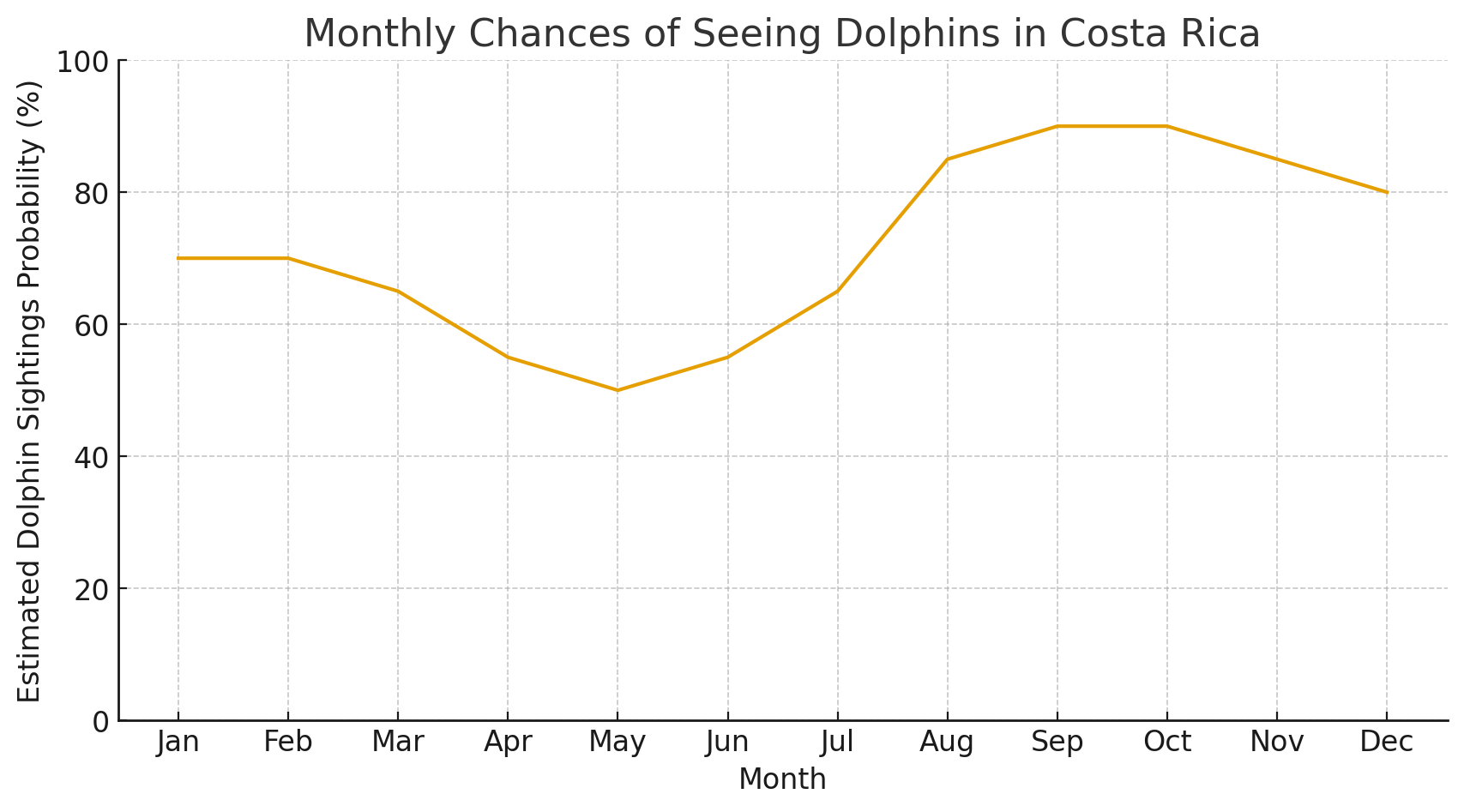
Dolphins during the high season
A secondary peak occurs from December through March, aligning with migration patterns of humpback whales from the Northern Hemisphere. Dolphins often follow whales, feeding on fish disturbed by the whales’ movements.
The slowest period for dolphin sightings runs from April through June. Dolphins are still present but spread out more, making encounters less predictable. That said, I’ve had incredible April dolphin encounters, so it’s not impossible.
How Does Weather Affect Dolphin Watching?
Costa Rica has two main seasons: dry (December-April) and rainy (May-November). Both offer excellent dolphin watching, but with different considerations.
Dry season provides consistently calm seas and sunny skies, perfect for photography and comfortable boat rides. However, this is also peak tourist season, meaning more boats on the water and higher prices.
Rainy season sees fewer tourists and lower prices. Morning rain showers are common but usually brief, clearing by midday. Seas can be rougher, particularly in September and October. However, these months coincide with peak dolphin breeding season and some of the most spectacular marine life activity of the year.
I often recommend September and early October for serious wildlife enthusiasts willing to handle occasional rain. You’ll see dolphins, whales, and other marine life in incredible abundance with far fewer tourists around.
How Can You Watch Dolphins Responsibly in Costa Rica?
Costa Rica takes marine mammal protection seriously. As someone who makes a living from these animals, I’m passionate about responsible practices that ensure dolphins thrive for future generations.
What Are Costa Rica’s Dolphin Watching Regulations?
Costa Rica established specific regulations in 2005 to protect whales and dolphins from tourism impacts. Every boat operator must follow these rules, enforced by park rangers and maritime police.
The key regulations include
Minimum approach distance of 50 meters (165 feet) for dolphins. Boats cannot intentionally approach closer, though dolphins often swim toward boats on their own. For whales, the minimum distance increases to 100 meters.
Maximum observation time of 30 minutes per pod. This prevents harassment and allows dolphins to continue normal activities without prolonged disturbance.
Approach angle restrictions. Boats must approach from behind at a 45-degree angle, never head-on or by cutting across the dolphins’ path.
Speed limits. Boats must reduce speed when within 200 meters of dolphins, operating at a slow, steady pace that allows animals to move away if they choose.

No swimming with dolphins
This rule surprises many visitors, but swimming with wild dolphins is illegal in Costa Rica for good reasons. It stresses the animals and poses safety risks to humans.
No feeding. Feeding wild dolphins disrupts natural behaviors and can make them dependent on humans.
Maximum two boats per pod. This prevents overwhelming pods with multiple vessels.
These regulations exist to protect dolphins, not to ruin your experience. Responsible operators follow them strictly while still providing incredible encounters.
How Do You Choose an Ethical Tour Operator?
Not all tour operators are created equal. Some prioritize wildlife welfare, while others focus only on customer satisfaction regardless of impact. Here’s what to look for when booking:
- Valid permits and licenses. Operators should display ICT (Instituto Costarricense de Turismo) certification and national park permits. Ask to see these documents.
- Captain knowledge. Experienced captains understand dolphin behavior and position boats properly without chasing or harassing animals. They should explain regulations before departure.
- Appropriate boat size. Smaller boats (6-15 passengers) generally provide better experiences than large party boats with 30+ people.
- Education focus. Quality operators teach passengers about dolphins, their conservation status, and why regulations matter. They view tours as educational experiences, not just entertainment.
Red flags include operators who promise guaranteed sightings (impossible with wild animals), chase dolphins at high speed, approach too closely, or allow more than 30 minutes with a single pod.
What Should You Do During a Dolphin Encounter?
Your behavior during dolphin encounters matters more than you might think. Follow these guidelines:
- Stay quiet. Loud noises stress dolphins and reduce the chances they’ll approach. Speak in hushed tones and avoid yelling or screaming even when excited.
- Move slowly. Sudden movements startle dolphins. Keep your actions calm and deliberate.
- Don’t reach into the water. It’s tempting to try touching a dolphin that swims close, but this is illegal and potentially dangerous. Dolphins have powerful jaws and might bite if they feel threatened.
- Follow your guide’s instructions. If your guide says to move to a different side of the boat or put cameras down, do it. They’re managing the encounter for everyone’s benefit.
- Watch for behavior cues. If dolphins begin swimming erratically, diving repeatedly, or moving away consistently, they’re indicating stress. Your captain should leave the area immediately.
- Put your phone down sometimes. I know everyone wants photos, but actually watching dolphins with your own eyes, without a screen between you, creates memories cameras can’t capture. Take some photos, then put the camera down and just observe.
Fascinating Facts About Dolphins in Costa Rica
Let me share some incredible dolphin facts I’ve learned during my years working with these animals.
Dolphins are among the most intelligent creatures on Earth, with brain-to-body ratios second only to humans. They demonstrate problem-solving abilities, use tools, have individual names (signature whistles), and show evidence of self-awareness.
They sleep with half their brain at a time, keeping one eye open. One brain hemisphere rests while the other stays alert to watch for predators and maintain breathing. Each side gets about four hours of sleep per day. This half-brain sleeping technique is called unihemispheric slow-wave sleep.
What you should know about dolphins
Dolphin pregnancies last 9-16 months depending on species. Females give birth to a single calf and nurse it for up to two years. Mother-calf bonds are extremely strong, with mothers fiercely protective of their young.
Did you know? Dolphins can hold their breath for up to 15 minutes, though most dives last only 30-60 seconds. They must consciously decide to breathe, unlike humans whose breathing is automatic. This means dolphins can never truly be unconscious or they would drown.
In Costa Rican culture, dolphins hold special significance as symbols of good fortune and harmony with the ocean. Traditional artwork often features dolphin motifs, reflecting the deep connection coastal communities feel with these animals.
Conservation status varies by species. While most dolphin species in Costa Rican waters are stable, they face threats from fishing net entanglement, ocean pollution, and habitat degradation. Costa Rica’s extensive marine protected areas help safeguard populations.
Planning Your Dolphin Watching Adventure in Costa Rica
Ready to book your dolphin adventure? Here’s the practical information you need.
How Much Do Dolphin Tours Cost?
Dolphin tour prices vary significantly by location and tour type:
- Uvita/Marino Ballena: $65-85 per person for half-day tours (3-4 hours). Full-day tours combining dolphin watching with snorkeling at Caño Island run $95-120.
- Drake Bay/Osa Peninsula: $85-110 per person for half-day dolphin tours. Premium multi-day packages with accommodations range from $400-600 per person.
- Golfo Dulce: $75-95 per person for half-day tours from Puerto Jiménez or Golfito.
- Tortuguero: $45-65 per person for canal tours where dolphins might be spotted (not dedicated dolphin tours).
- Guanacaste (Papagayo, Tamarindo): $90-140 per person due to resort-area pricing.
Most tours include snorkeling equipment, fruit snacks, water, and sometimes lunch on full-day trips. Park entrance fees (typically $6-15) may be additional.
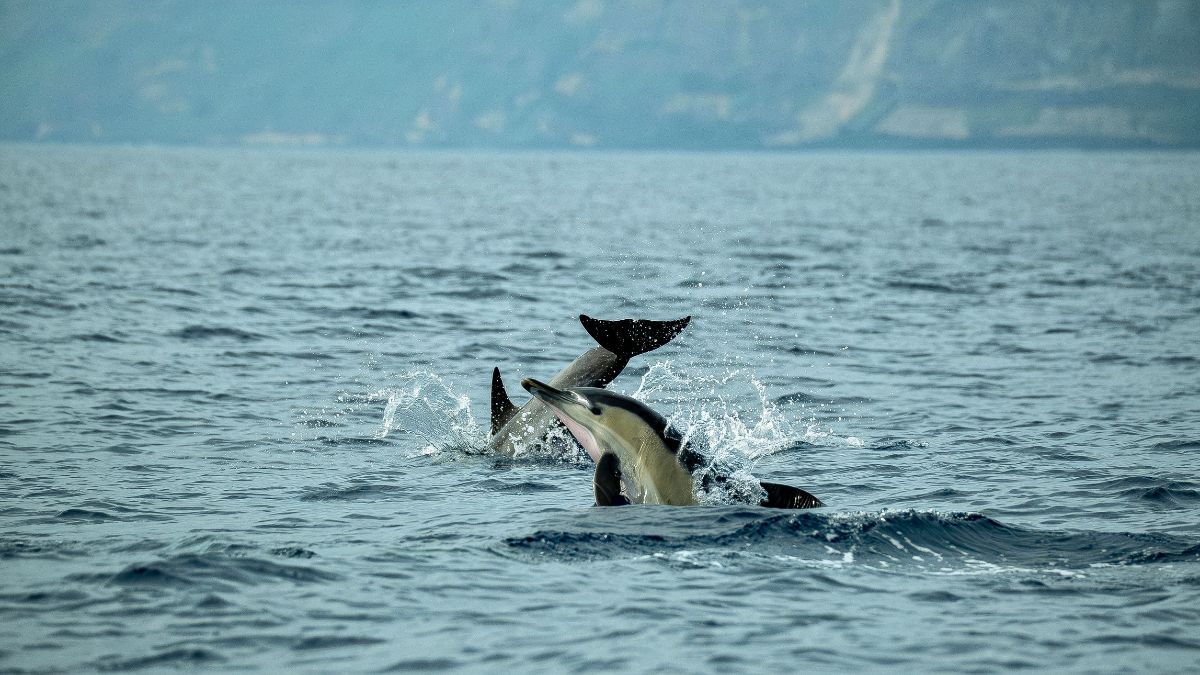
What Should You Bring on a Dolphin Watching Tour?
Pack smart to maximize comfort and enjoyment:
Essential items
- Reef-safe sunscreen (chemical sunscreens damage coral)
- Hat with chin strap (it’s windy on boats)
- Sunglasses with strap
- Light long-sleeve shirt for sun protection
- Swimsuit under your clothes
- Towel
- Waterproof bag for phone/camera
- Motion sickness medication if needed
Camera gear
- Camera with zoom lens (200mm minimum)
- Extra batteries and memory cards
- Waterproof case or dry bag
- GoPro for underwater shots
Optional but recommended
- Binoculars for distant sightings
- Light rain jacket (rainy season)
- Snacks if you have dietary restrictions
- Cash for tips (captains and guides appreciate 10-15%)
Most operators provide snorkeling gear, so you don’t need to bring your own unless you prefer it.
Can You Combine Dolphin Watching with Other Activities?
Absolutely, and I highly recommend it. Costa Rica’s South Pacific region offers incredible activity combinations.
The most popular combo pairs dolphin watching with snorkeling at Caño Island. These full-day tours depart early from Uvita, spend 60-90 minutes in Marino Ballena looking for dolphins and whales, then continue to Caño Island for world-class snorkeling among tropical fish, sea turtles, and reef sharks. Tours cost $95-120 and provide an unforgettable day on the water.
Multi-day itineraries can include dolphin tours, hiking in Corcovado National Park, mangrove kayaking, waterfall rappelling, and beach time. Many visitors spend 4-5 days based in Uvita to experience everything the South Pacific offers.
Where to See Dolphins in Costa Rica – Conclusion
Costa Rica truly deserves its reputation as one of the world’s premier dolphin watching destinations. With resident populations along both coasts, exceptional viewing success rates, and strict conservation protections, this country offers dolphin encounters that rival anywhere on Earth.
From my perspective as a dive instructor who’s been fortunate enough to work with dolphins for years, the magic never fades. Every encounter brings something new, whether it’s a spinner dolphin’s acrobatic leap, a curious bottlenose investigating my dive group, or the ethereal clicking of spotted dolphins in Caño Island’s blue water.
I hope this guide helps you plan an unforgettable dolphin encounter in Costa Rica. See you on the water!
Frequently Asked Questions
Can you swim with dolphins in Costa Rica?
No, swimming with wild dolphins is illegal in Costa Rica. This regulation protects both dolphins and humans. Swimming with dolphins can stress the animals, disrupt their natural behavior, and potentially pose safety risks. You can observe dolphins from boats or while snorkeling if they approach you, but intentionally entering the water to swim with them is prohibited.
How likely am I to see dolphins on a tour in Costa Rica?
Success rates depend on location and season. In prime areas like Marino Ballena National Park near Uvita, dolphin sighting rates run 70-80% during peak season (August-December). During slower months (April-June), rates drop to 50-60%. Caribbean coast sightings at Tortuguero are less predictable at 40-50%. Morning tours consistently produce better results than afternoon trips.
What’s the difference between dolphins and whales?
Both dolphins and whales belong to the cetacean family, but dolphins are generally smaller (6-12 feet) compared to most whales (30-50 feet for humpbacks). Dolphins have cone-shaped teeth and eat fish, while baleen whales filter small organisms through plates. Interestingly, some species called “whales” like false killer whales are actually large dolphins. In Costa Rica, you can see both on the same tour during migration seasons.
Are dolphins dangerous to humans?
Wild dolphins are generally not dangerous, but they’re powerful animals that deserve respect. Bottlenose dolphins can weigh over 1,000 pounds and have strong jaws. While attacks are extremely rare, dolphins may bite if they feel threatened or cornered. This is why Costa Rica prohibits swimming with or touching wild dolphins. During boat tours following proper regulations, dolphins pose no danger to observers.
Which dolphin species is most common in Costa Rica?
The bottlenose dolphin (Tursiops truncatus) is the most commonly sighted species along both Pacific and Caribbean coasts. They’re year-round residents in Costa Rican waters and appear on roughly 70% of tours in prime locations. Spotted dolphins and spinner dolphins are also very common on the Pacific side, particularly around Marino Ballena National Park and Golfo Dulce.
Do I need diving certification to see dolphins underwater?
No, you don’t need certification for most dolphin encounters. Boat-based tours require no special skills. Snorkeling with dolphins needs only basic swimming ability and comfort with a mask and snorkel. Scuba diving does require PADI or SSI certification, but this is mainly for reef exploration. Dolphins occasionally appear during dives at places like Caño Island, but we don’t dive specifically to find dolphins.
What’s the best month to see dolphins in Costa Rica?
September and October offer the absolute best dolphin watching, coinciding with peak breeding season when dolphins are most active and social. August through December provides consistently excellent conditions with large pods and frequent sightings. December through March is also good, especially when humpback whales migrate through. April through June is the slowest period, though dolphins are still present year-round.
Sources and References
This article is based on first-hand experience and verified information from authoritative sources:
